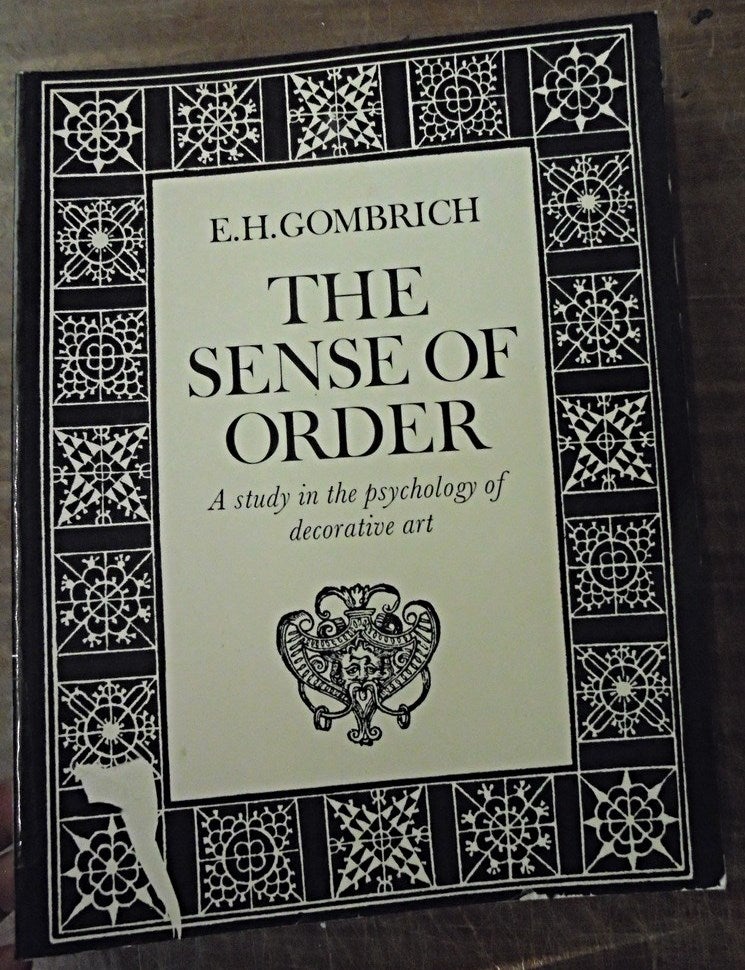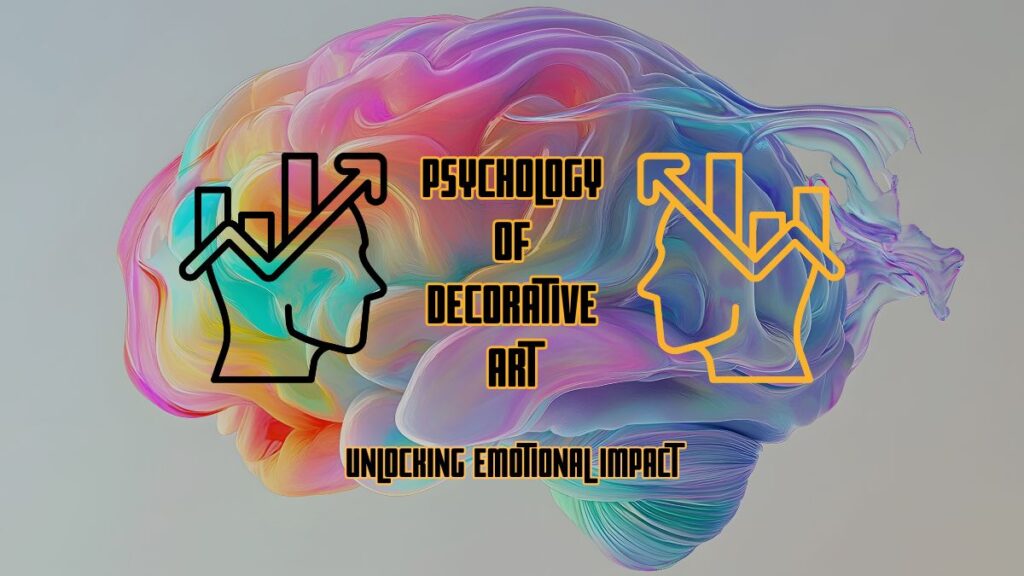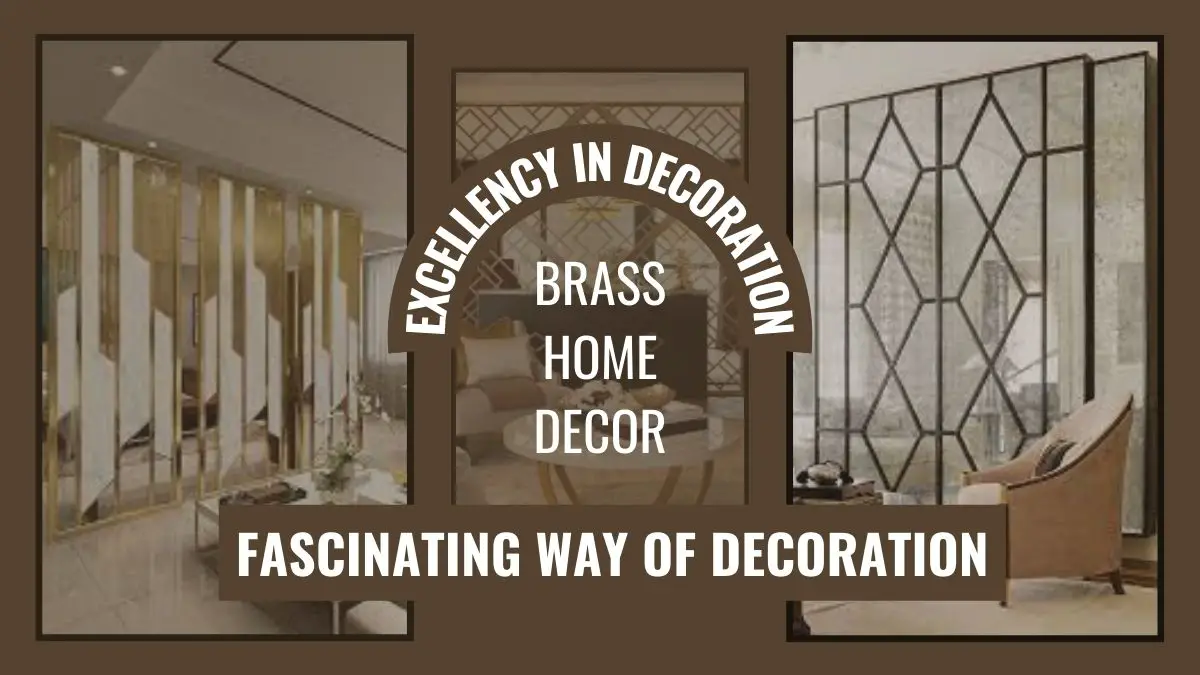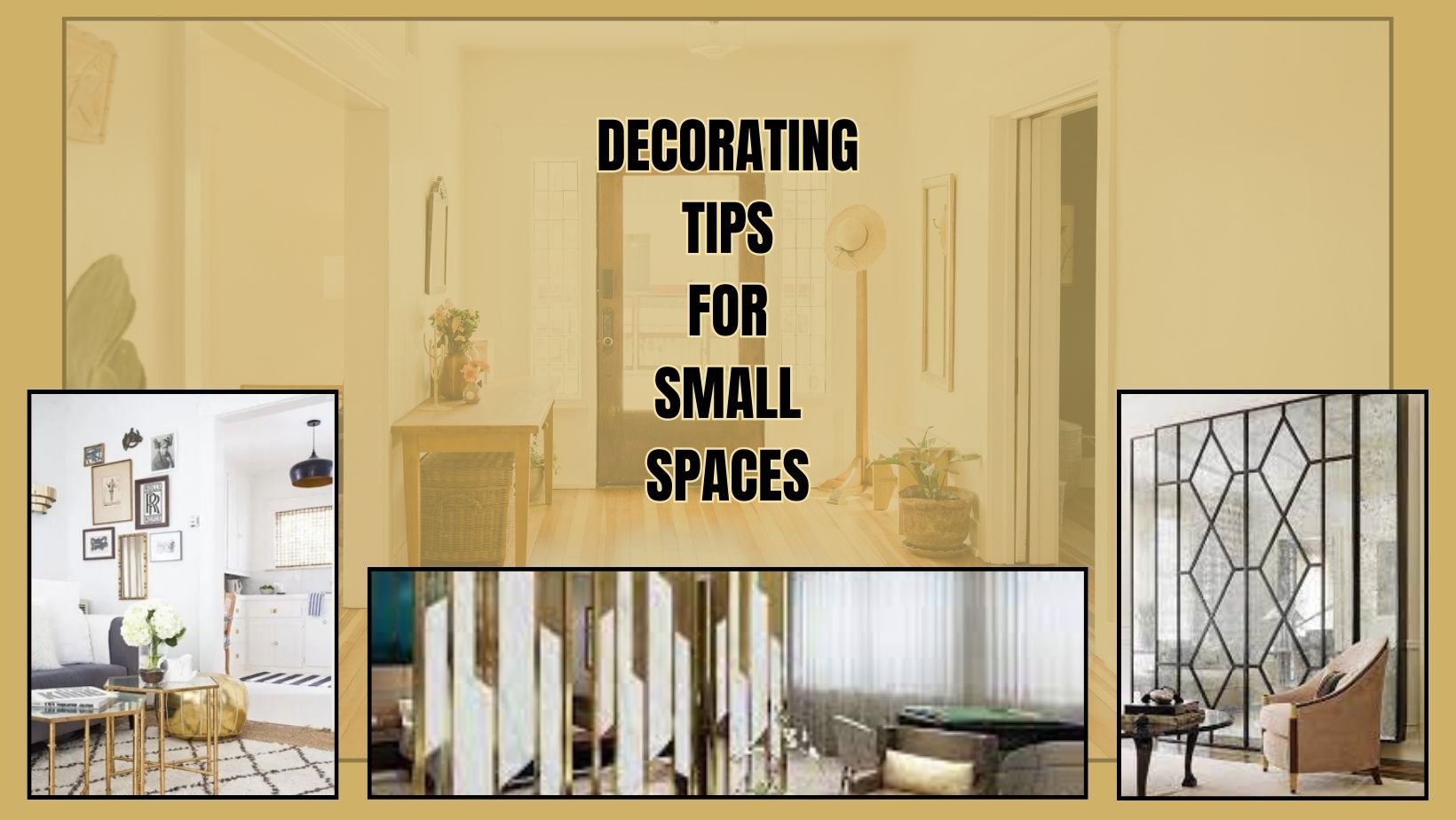Decorative art is more than just beauty and design. It reflects emotions, culture, and human thought.
The connection between psychology and decorative art reveals how art influences our minds and feelings. Why do certain patterns calm us? Why do some colors feel comforting while others energize us? The answers lie in the psychology behind decorative art.
From ancient carvings to modern home décor, every piece tells a story and impacts the way we think and feel. This fascinating relationship between the mind and artistic expression shapes our daily lives, even when we don’t notice it. In this blog, we’ll explore how decorative art interacts with human psychology, uncovering the deeper meanings and effects behind what we often see as mere decoration.

Related Article: Expert Decorating Tips for Small Spaces That Work Wonders
Emotional Connection In Art
Decorative art touches people on a deeply personal level. It goes beyond visual appeal, creating an emotional bond with the observer. This connection is not accidental but rooted in human psychology. Colors, patterns, and symbols all play a role in evoking feelings. Understanding this connection can deepen appreciation for art and its impact on our lives.
How Art Evokes Feelings
Art has the power to stir emotions instantly. A vibrant color palette can spark joy or excitement. Softer hues often evoke calmness and peace. Patterns also influence emotions, with repetitive designs offering comfort and stability. The interplay of elements triggers responses shaped by personal experiences and cultural backgrounds.
Textures and materials in decorative art further amplify this effect. Smooth surfaces may feel luxurious, while rough textures can suggest rawness or authenticity. These sensory elements connect with the human brain, creating emotional resonance.
Symbols And Their Emotional Weight
Symbols in art carry deep emotional meanings. They often represent universal ideas or personal memories. A heart symbol, for example, conveys love and affection. Natural motifs like flowers or trees suggest growth, life, or renewal. These symbols communicate emotions without the need for words.
In decorative art, cultural symbols hold special significance. They reflect traditions and shared values, fostering a sense of belonging. Even abstract forms can carry emotional weight, as viewers interpret them based on their own perspectives. This interplay of meaning and emotion makes decorative art uniquely powerful.
Decorative Art And Identity
Decorative art is more than just visual appeal. It tells stories about personal identity and cultural belonging. Every detail, from color choice to patterns, holds meaning. This connection between art and identity shapes how people express themselves and their heritage.
Personal Expression Through Design
Decorative art allows individuals to showcase their unique personality. The designs they choose reflect their emotions, values, and experiences. Bright colors might symbolize joy, while intricate details may hint at patience. A room, a piece of furniture, or even a vase can become a personal statement. These artistic choices turn everyday objects into mirrors of the soul.
Cultural Influence On Artistic Choices
Culture plays a major role in decorative art. Traditional patterns often represent shared history and values. For example, floral motifs may symbolize growth in some cultures. Geometric designs can signify balance or harmony. Through decorative art, cultural traditions are preserved and shared. People connect to their roots while adding their own modern touch.
Color Psychology In Design
Colors are more than visual elements. They evoke emotions and influence behavior. In decorative art, color selection can transform spaces and shape experiences. Understanding how colors impact mood and culture is key to effective design.
Impact Of Colors On Mood
Colors have a direct connection to human emotions. Bright colors like yellow often bring energy and positivity. Blue tones create calm and relaxation, ideal for peaceful spaces. Red can stimulate excitement or passion, but too much may overwhelm. Green symbolizes balance and harmony, making it perfect for tranquil environments.
Neutral shades like white and gray offer simplicity and minimalism. They are often used to create a clean, modern look. Darker hues, such as black, evoke sophistication but may feel heavy in large amounts. Choosing the right color can set the emotional tone of a room.
Cultural Interpretations Of Color
Colors carry different meanings across cultures. In Western cultures, white often symbolizes purity and weddings. In Eastern traditions, it may represent mourning or funerals. Red is seen as lucky and joyful in China but can signal danger in other regions.
Blue is often associated with trust in Western society but may represent mourning in some Middle Eastern cultures. Green is widely seen as the color of nature, but in some areas, it carries religious significance. Designers must consider cultural perspectives to ensure colors resonate positively with their audience.
Patterns And Emotional Resonance
Decorative art has a profound effect on human emotions. Patterns, in particular, play a key role in creating emotional connections. The shapes, lines, and repetitions in decorative designs can influence how we feel. Some patterns evoke a sense of peace, while others spark energy or excitement.
Understanding how patterns resonate emotionally helps us choose designs wisely. Whether geometric or organic, each pattern type has a unique psychological impact. Let’s explore how these patterns connect with our emotions.
Geometric Patterns And Harmony
Geometric patterns are precise and symmetrical. They often include shapes like squares, triangles, and circles. This symmetry creates a sense of balance and order. People find comfort in the predictability of these designs.
Such patterns are common in tiles, fabrics, and architecture. The structured arrangement promotes feelings of stability and harmony. They are especially soothing in spaces where focus and calmness are needed.
Geometric designs work well in modern interiors. Their clean lines create a sense of control and clarity. For many, this pattern style helps reduce stress and mental clutter.
Organic Forms And Their Calming Effects
Organic patterns mimic shapes found in nature. They include flowing lines, curves, and irregular forms. These patterns often resemble leaves, waves, or clouds.
Such designs bring a sense of calm and relaxation. The irregularity feels natural, unlike the precision of geometric patterns. They remind us of the outdoors, which can reduce anxiety and increase happiness.
Organic forms are often used in rugs, wallpapers, and ceramics. These patterns soften the look of a space, making it more inviting. They are particularly effective in bedrooms or living areas, where comfort is key.
Textures That Speak To The Senses
Decorative art isn’t just about colors and shapes. Textures play a vital role in creating emotional connections. They engage our senses, shaping how we feel in a space. Whether through touch or sight, textures evoke emotions and tell stories. Let’s explore how textures speak to our senses and influence our psychology.
Physical Touch And Emotional Response
Touch is a powerful sense that affects our emotions deeply. Soft fabrics like velvet or silk create feelings of comfort and luxury. Rough textures, like burlap or untreated wood, evoke a sense of rawness or nature. Smooth surfaces bring calmness, while uneven ones can feel energizing. The way a material feels can influence how we perceive a space or object. A soft pillow or a rough stone sculpture communicates emotions through touch.
Visual Texture As A Mood Setter
Textures don’t need physical touch to impact us. Visual textures also affect our mood and perception. A wall with a brick pattern adds warmth and character to a room. Glossy surfaces like polished marble feel modern and clean. Matte textures create a grounded, subtle look that feels relaxed. Even an image of a textured surface can trigger emotional responses. The patterns and finishes we see can set the tone of a space.

Credit: www.mullenbooks.com
Related Article: Basic Rules of Feng Shui: Unlock Harmony at Home
The Role Of Space In Decorative Art
Decorative art is not just about colors and patterns. Space plays a crucial role in shaping the overall impact of a design. The arrangement of elements within a space influences emotions and perceptions. Understanding how space interacts with art can transform simple designs into meaningful experiences. This section explores the psychology behind space in decorative art.
Balance And Emotional Stability
Balance in decorative art creates a sense of harmony. Symmetrical designs make spaces feel calm and organized. Asymmetry can add interest but must be carefully balanced to avoid chaos. Balanced use of space promotes emotional stability and relaxation. It ensures that no area feels overcrowded or empty.
In interior design, balanced layouts help people feel comfortable. For example, evenly spaced furniture or artwork can reduce stress. This principle applies to both physical and visual spaces. Achieving balance requires thoughtful placement of decorative elements.
Negative Space And Its Subtle Impact
Negative space refers to the empty areas around design elements. It is as important as the objects themselves. Too little negative space can make a design feel cluttered. On the other hand, too much may feel cold or distant.
Carefully planned negative space draws attention to key elements. It helps designs breathe and feel more approachable. In decorative art, negative space often brings subtle elegance. It allows viewers to focus and appreciate details without feeling overwhelmed.
Using negative space effectively creates a sense of openness. It makes environments feel inviting and peaceful. Designers use this technique to convey simplicity and sophistication in their work.
Art As A Tool For Emotional Healing
Decorative art is more than just a visual treat. It has the power to influence your emotions and improve your mental well-being. By carefully choosing and arranging decorative elements, you can create spaces that feel like a personal sanctuary.
Therapeutic Uses Of Decorative Elements
Have you ever felt soothed by a painting or a simple pattern on a rug? That’s the therapeutic magic of decorative art. Certain colors, textures, and designs can evoke specific emotions, such as peace, happiness, or even nostalgia.
For example, soft pastel tones are known to promote relaxation. Hanging art with nature themes, like a serene forest or a flowing river, can reduce stress and make you feel more grounded. You can use these elements to turn your home into a place that supports your emotional healing.
Think about how you feel in your favorite café or a cozy bookstore. The lighting, the furniture, and the decor all play a role. You can replicate that sense of comfort and belonging in your own space by choosing items that resonate with you emotionally.
Creating Calm Through Design
Your environment shapes your mood. A cluttered or overly bright space can make you anxious or restless. On the other hand, a well-designed room with intentional decor can bring calm to your busy mind.
Start small. Add a few meaningful decorative pieces, like a handmade vase or a framed quote that inspires you. Pay attention to the layout—leave some open spaces to avoid feeling overwhelmed. Minimalist design often works wonders in creating a sense of calm.
Lighting also matters. Soft, warm lighting can make a room feel comforting, while harsh lighting may increase tension. Try using lamps with dimmers or candles to create a more peaceful atmosphere. How does the lighting in your favorite room make you feel?
Decorative art is not just about aesthetics. It’s a tool you can use to nurture your emotional well-being. By being intentional with your choices, you can turn your space into a retreat that helps you heal and recharge.

Credit: morgensternbooks.com
Related Article: Simple Home Decor Ideas: Transform Your Space!
Modern Applications Of Decorative Art
Decorative art is no longer confined to traditional aesthetics. It has evolved into a powerful tool for modern living. Today, it influences emotions, behaviors, and personal spaces in profound ways. The integration of decorative art into daily life helps create meaningful connections. Whether physical or digital, it shapes how people interact with their surroundings.
Interior Design And Emotional Atmosphere
Decorative art plays a vital role in interior design. It creates spaces that evoke specific emotions. Warm tones and organic patterns can make a room feel cozy. Bold, geometric designs inspire energy and focus. Every element, from wall art to furniture, influences emotional well-being. Thoughtfully chosen decorative pieces can reduce stress and enhance relaxation. They help transform a house into a home with a personal touch.
Digital Art And Emotional Engagement
In the digital age, art extends beyond physical boundaries. Digital decorative art is widely used in apps, websites, and virtual environments. Vibrant colors and dynamic designs improve user engagement. Abstract visuals can stimulate creativity and curiosity. Digital wallpapers and screensavers set moods and personalize devices. This form of decorative art bridges technology and emotional connection. It enhances digital experiences in visually appealing ways.

Credit: www.amazon.com
Related Article: DIY Room Decor Ideas: Transform Your Space on a Budget
Conclusion
Decorative art reflects the deep connection between creativity and human psychology. It tells stories, evokes emotions, and shapes how we experience spaces. Every pattern, color, and texture carries meaning, influencing mood and behavior. Understanding this connection helps us appreciate art’s impact on daily life.
From ancient designs to modern trends, decorative art continues to inspire. It bridges individuality and culture, making spaces feel personal yet universal. By exploring its psychology, we uncover the emotional power behind artistic expression. Decorative art is more than beauty—it’s a reflection of the human mind and spirit.
Related Article: Enhance Your Living Room with Beautiful Decorative Flowers
- Best Electric Pressure Washers for Powerful and Efficient Home Cleaning - October 22, 2025
- Best Riding Lawn Mowers for Powerful and Efficient Lawn Care - September 11, 2025
- Best Cheap Smart Door Lock: Enhance Home Security with Ease - August 21, 2025



